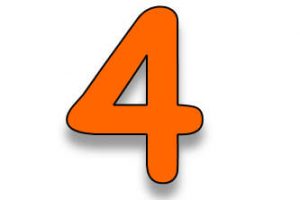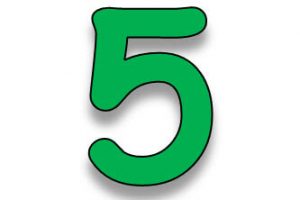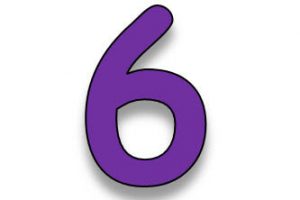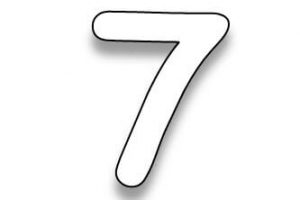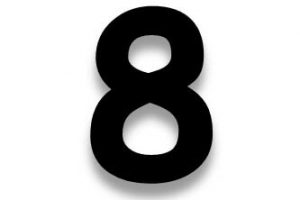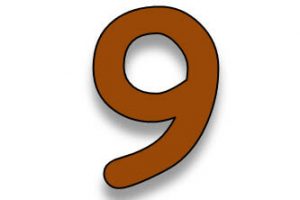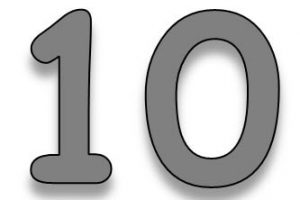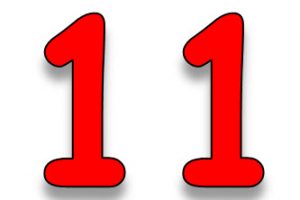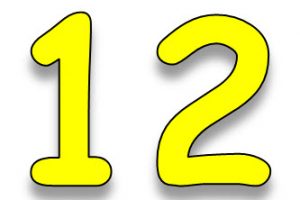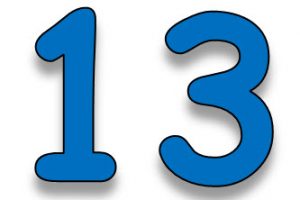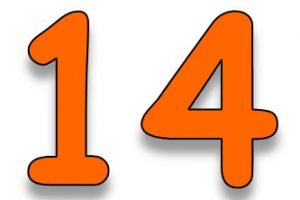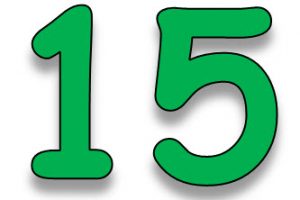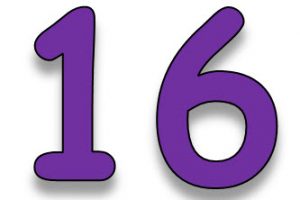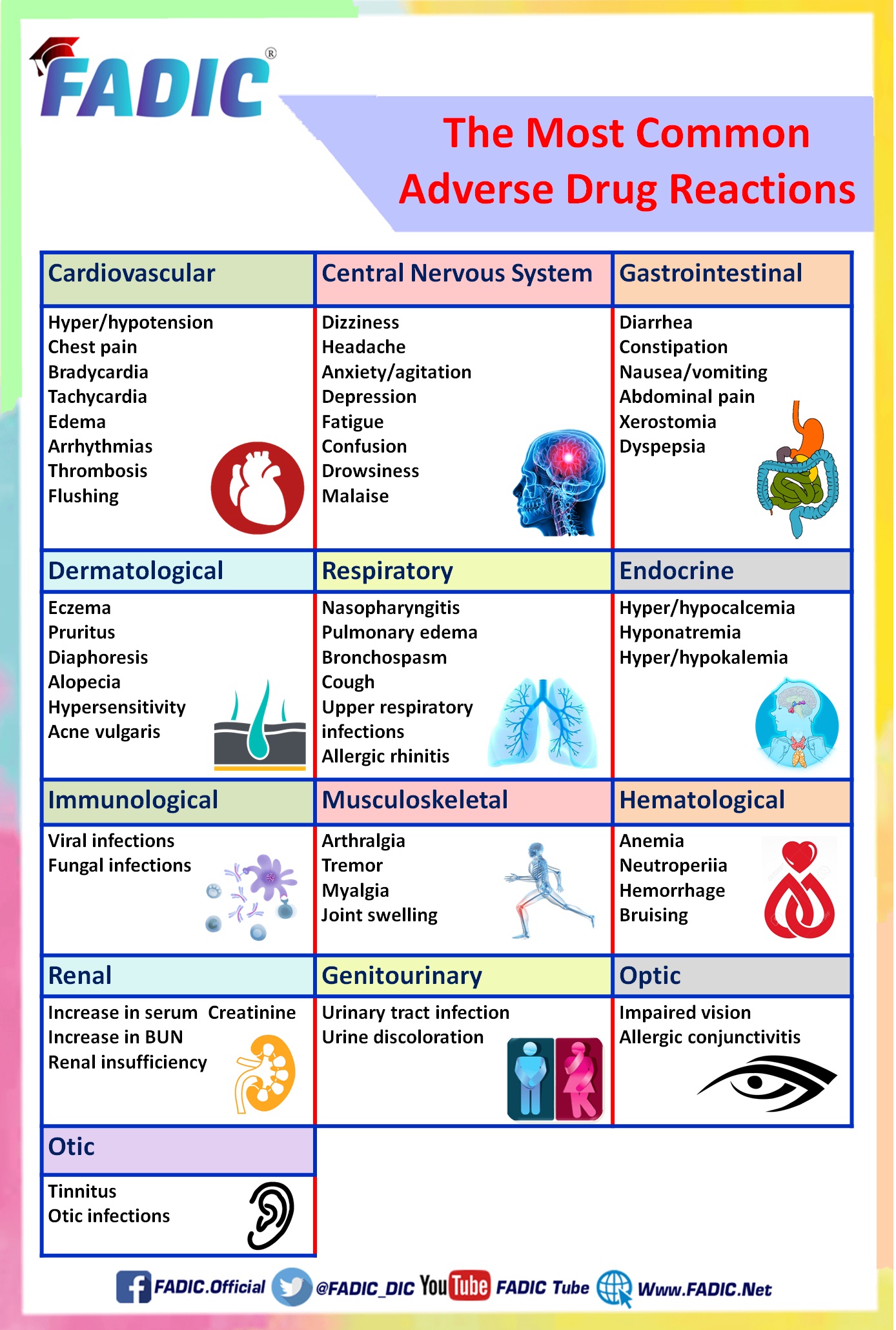Top 200 Drugs To Memorize
Top 200 Drugs To Memorise
Top 200 Drugs To Memorize article in Your Daily Clinical Practice
In this Article, you will Read About the Top & Most Common Prescribed Drugs:
- Cardiovascular Drugs 💊
- CNS Drugs 💊
- Benzodiazepines Drugs 💊
- Dopamine Agonist Drugs 💊
- Dementia and Alzheimer’s Disease Drugs 💊
- Anti-Diabetic Drugs 💊
- Antihyperlipidemic Agents Drugs 💊
- Musculoskeletal Drugs 💊
- Gastrointestinal Drugs 💊
- Respiratory Drugs 💊
- Antiglaucoma Drugs 💊
- Antimicrobial Drugs 💊
- Hormone Treatment Drugs 💊
- Anticoagulant Drugs 💊
- Miscellaneous Drugs 💊
- Hypothyroidism Drugs 💊
- Vitamins 💊
- Attention deficit hyperactivity disorder Drugs 💊
- Anti-epileptics Drugs 💊
- Anorexiant Drugs 💊
- Anti-manic Drugs 💊
Top 200 Drugs
Over the past few decades, the health care needs of our population changed along with the role of pharmacists.
Historically, pharmacists’ role in healthcare was centred on dispensing medications. In addition, they have to ensure the accurate delivery of drugs to patients.
Today pharmacists are an integral part of our health care team.
They are also considered the most accessible health care professionals.
Additionally, this approachability enables them to perform their pharmacists’ patient care process (PPCP).
This process contains items such as collect, access, plan, implement and follow-up.
It’s done to monitor and evaluate the appropriateness and effectiveness of medications and to obtain patient feedback.
Additionally, pharmacists advise other health professionals concerning medication therapy decisions.
Moreover, inform them about the composition of drugs and their physicochemical and biological properties.
What is Pharmacist’s Role?
Pharmacists also ensure the drug’s purity, efficacy, interactions, and side effects.
To deliver excellent pharmacy services to patients, pharmacists must have complete knowledge of commonly prescribed drugs.
In 2014, the total number of prescriptions dispensed was approximately 4.325 billion.
The top 200 most prescribed drugs accounted for approximately 2.87 billion.
The top 200 drugs represent 66.6% (2/3) of total prescriptions.
Top 200 drugs according to the targeted system:
The lists contain many blockbuster drugs of the last 10 to 15 years, such as atorvastatin, simvastatin, etc.
The most prescribed drugs based on systems were cardiovascular (49), central nervous system (42), endocrine (30) and musculoskeletal (19).
They accounted for approximately 140 (70%) of the top 200 most prescribed drugs.
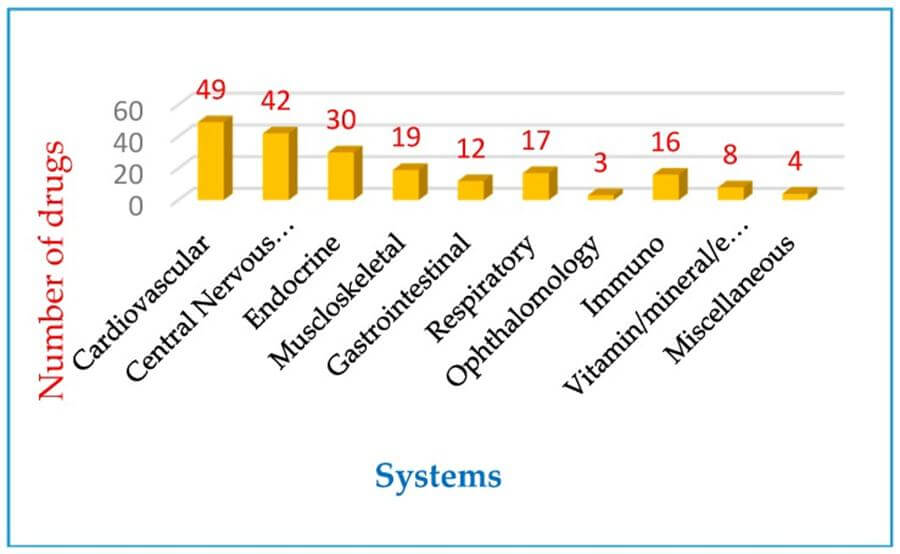
Top 200 drugs and their Categories:
Top Cardiovascular drugs
They are agents that affect the function of the heart and blood vessels. They are considered one of the most widely used drugs in medicine.
Heart disease describes a wide range of conditions that affect the heart. Diseases under the heart disease umbrella include blood vessel diseases, such as coronary artery disease.
In addition, heart rhythm problems (arrhythmias); and congenital heart defects.
Moreover, the diseases that affect the heart muscle, valves or rhythm are considered forms of heart disease. There is also another term used, “cardiovascular disease.”
Cardiovascular disease generally refers to conditions that involve narrowed or blocked blood vessels that can lead to a heart attack, chest pain (angina) or stroke.
Treatment for heart disease includes medication, lifestyle changes and surgery or procedures.
Heart medication is used to treat heart conditions, manage the symptoms of heart disease, and reduce the risk of future heart events.
Examples of heart disorders in which drugs are in the top 200 list:
- Hypertension (high blood pressure)
- Angina pectoris (chest pain resulting from inadequate blood flow through the coronary arteries to the heart muscle)
- Heart failure (inadequate output of the heart muscle about the needs of the rest of the body)
- Arrhythmias (disturbances of cardiac rhythm).
Common categories & mechanisms of CVS Drugs
ACE Inhibitors
ACE (angiotensin-converting enzyme) Inhibitors are antihypertensive medications. the hypotensive effect of ACE inhibitors is due to
- Block the conversion of angiotensin I to angiotensin II
- Inhibits the degradation of bradykinin
Calcium Channel Blocker
Calcium channel blockers, also called calcium antagonists, prevent calcium from entering the cells of the heart and blood vessel walls.
This reduces electrical conduction within the heart and decreases the force of contraction of the muscle cells.
In addition to dilating arteries. As a result, the blood vessels relax, and the heart muscle receives more oxygenated blood.
Uses of calcium channel blockers
to prevent, treat or improve symptoms in a variety of conditions, such as:
- High blood pressure
- Coronary artery disease
- Chest pain (angina)
- Irregular heartbeats (arrhythmia)
- Some circulatory conditions, such as Raynaud’s disease
There are three classes of CCBs
- Dihydropyridines
- Phenylalkylamines
- benzothiazepines
Beta-blocker
Beta-blockers, also known as beta-adrenergic blocking agents, are drugs that block the neurotransmitters norepinephrine and epinephrine from binding to receptors.
When the neurotransmitters are prevented from binding to the receptors, it, in turn, causes the effects of adrenaline (epinephrine) to be blocked. This action allows the heart to relax and beat more slowly, reducing the blood the heart must pump. Over time, this action improves the pumping mechanism of the heart.
Uses for beta blockers
There are several types of beta blockers, each with its characteristics. They can be used to prevent, treat or improve symptoms in a variety of conditions, such as:
- High blood pressure
- Irregular heart rhythm (arrhythmia)
- Heart failure
- Chest pain (angina)
- Heart attacks
- Migraine
- Certain types of tremors
- an overactive thyroid (hyperthyroidism)
- anxiety conditions
- glaucoma – as eye drops
Diuretic
- Diuretic drugs increase urine output by the kidney (i.e., promote diuresis).
- Most diuretics produce diuresis by inhibiting sodium reabsorption at different segments of the renal tubular system.
- That helps to relieve the heart’s workload and decreases the buildup of fluid in the lungs and other parts of the body, such as the ankles and legs.
- There are three types of diuretics: thiazide, loop and potassium-sparing.
- Each type affects a different part of the kidneys and may have other uses, side effects and precautions
Alpha-2-agonist
- They are a class of sympathomimetic agents that selectively stimulates alpha-adrenergic receptors.
- The alpha-adrenergic receptor has two subclasses, α1 and α2. Alpha 2 receptors are associated with sympatholytic properties.
- In addition, α Adrenergic agonists have the opposite function of alpha-blockers.
- The activation of α2 inhibits the enzyme adenylate cyclase.
- Inactivation of adenylate cyclase, in turn, leads to the inactivation of the secondary messenger cyclic adenosine monophosphate and induces smooth muscle and blood vessel constriction.
Angiotensin II receptor blocker (ARB)
- Block the action of angiotensin II by preventing angiotensin II from binding to angiotensin II receptors on the muscles surrounding blood vessels.
- As a result, blood vessels enlarge (dilate), reducing blood pressure.
Vasodilator
- Relax the smooth muscle in blood vessels, which causes the vessels to dilate.
- Dilation of arterial (resistance) vessels leads to a reduction in systemic vascular resistance, which leads to a fall in arterial blood pressure.
Alpha-1-Blocker
- They work by keeping the hormone norepinephrine from tightening the muscles in the walls of arteries and veins.
- This causes the vessels to remain open and relaxed, improving blood flow and lowering blood pressure.
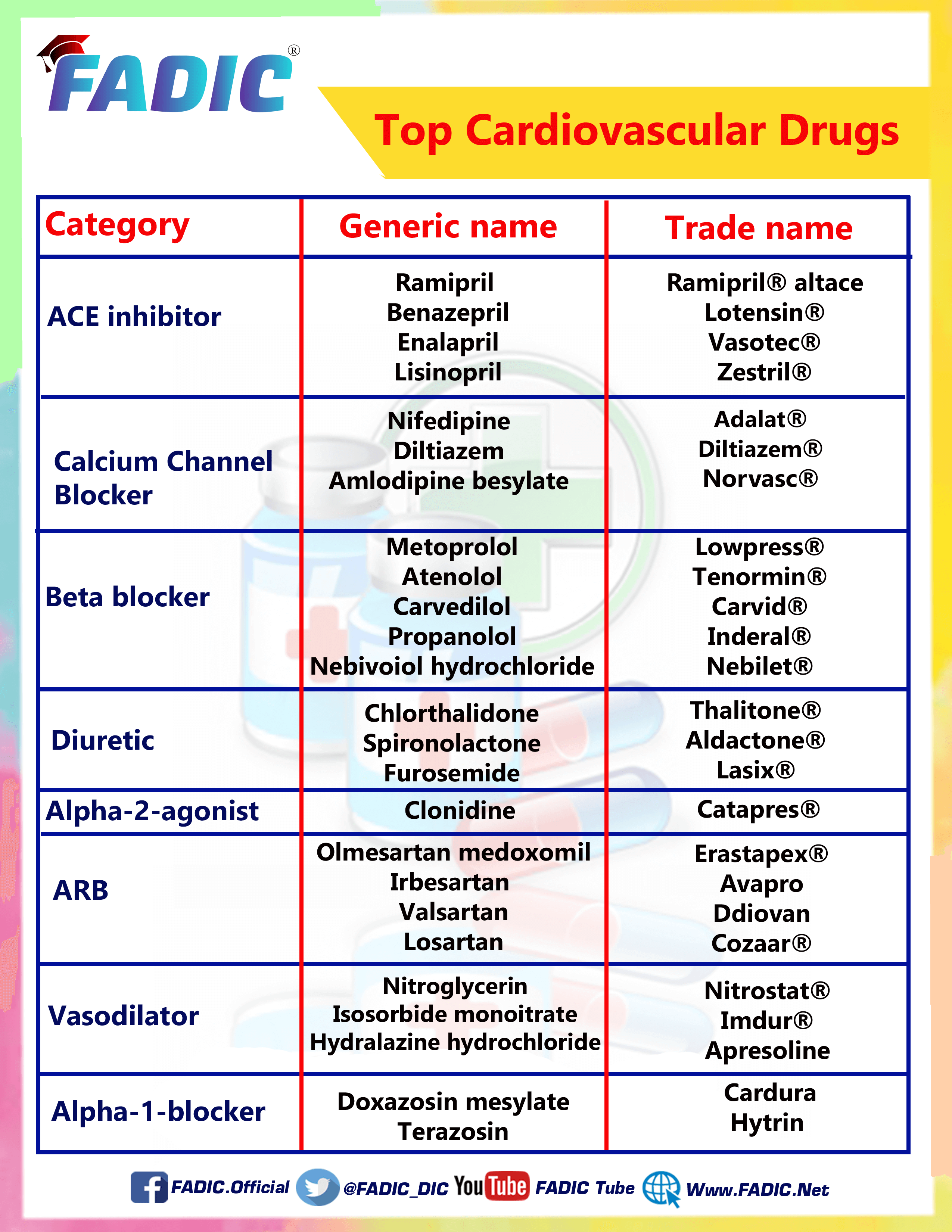
Top CNS Drugs
Many drugs work on the CNS, including anaesthetics and anticonvulsants.
In addition, antiemetics, antiparkinson agents, CNS stimulants, muscle relaxants, and narcotic analgesics (pain relievers).
Moreover, nonnarcotic analgesics (such as acetaminophen and NSAIDs) and sedatives.
Analgesic non-opioid
Analgesics are medicines that are used to relieve pain. They are also known as painkillers or pain relievers.
Technically, the term analgesia refers to a medication that provides relief from pain without putting you to sleep or making you lose consciousness.
The most common groups of pain killers
- non-opioid analgesics, non-steroidal anti-inflammatory drugs (NSAIDs), and paracetamol
- opioids (narcotics)
Opioid
- Act on receptors located on neuronal cell membranes.
- The presynaptic action of opioids to inhibit neurotransmitter release is considered their primary effect on the nervous system.
NSAID
- They block the COX enzymes and reduce prostaglandins throughout the body.
- As a consequence, ongoing inflammation, pain, and fever are reduced.
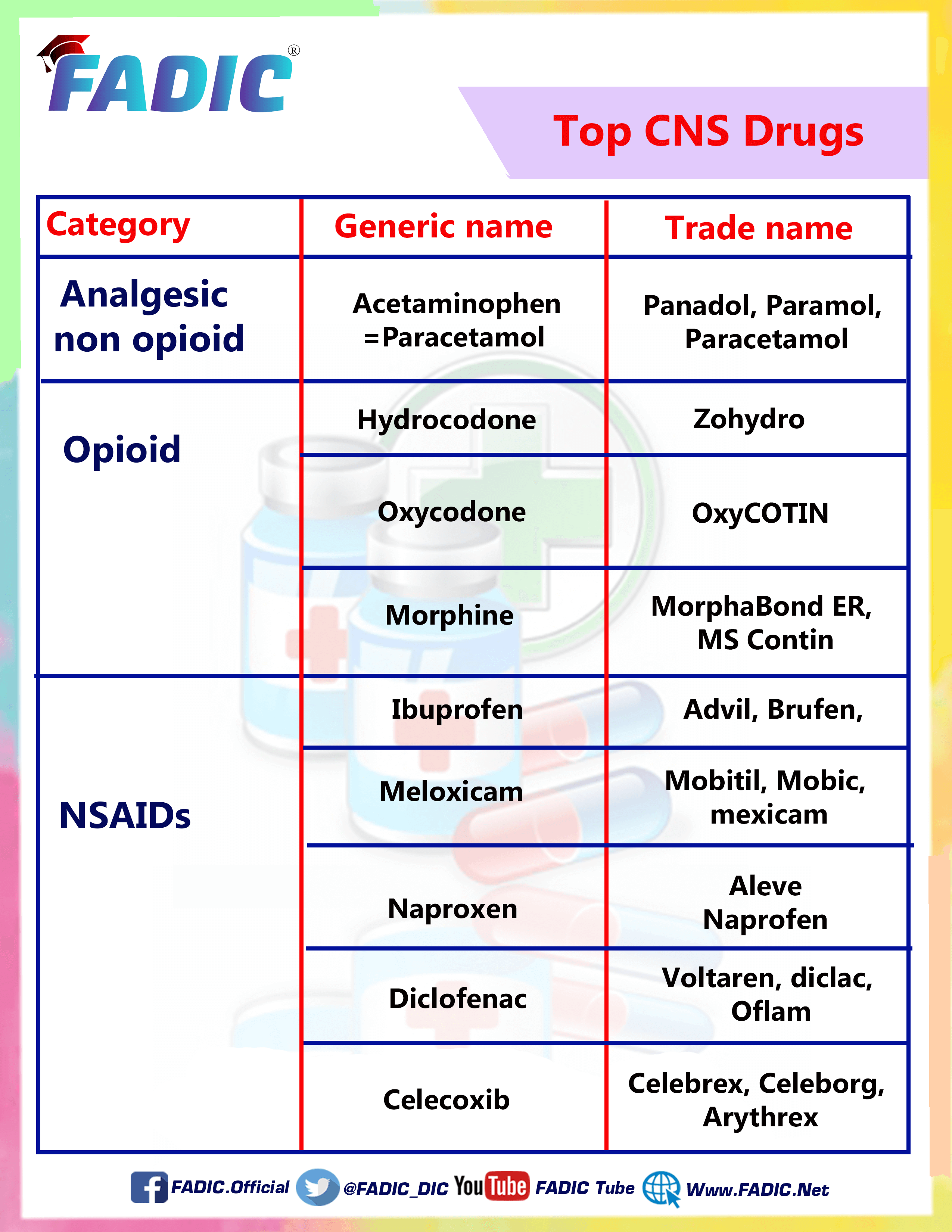
Antidepressants
Antidepressants are a class of drugs that reduce symptoms of depressive disorders by correcting chemical imbalances of neurotransmitters in the brain.
Chemical imbalances may be responsible for changes in mood and behaviour.
Types of antidepressants
Certain brain chemicals called neurotransmitters are associated with depression — particularly serotonin, norepinephrine and dopamine.
Most antidepressants relieve depression by affecting these neurotransmitters. Each type (class) of antidepressant affects these neurotransmitters slightly differently.
Many types of antidepressant medications are available to treat depression, including:
- Selective serotonin reuptake inhibitors (SSRIs).
- Serotonin and norepinephrine reuptake inhibitors (SNRIs).
- Atypical antidepressants.
- Tricyclic antidepressants.
- Monoamine oxidase inhibitors (MAOIs).
- Other medications.
Selective serotonin reuptake inhibitors (SSRI)
SSRIs increase the extracellular level of the neurotransmitter serotonin by limiting its reabsorption into the presynaptic cell.
They increase the level of serotonin in the synaptic cleft available to bind to the postsynaptic receptor.
Serotonin and norepinephrine reuptake inhibitors SNRI
It’s believed that SNRIs help treats depression by keeping up the levels of serotonin and norepinephrine in the brain.
They do this by stopping them from returning to the released cells.
Dopamine/norepinephrine reuptake inhibitor
Act as a reuptake inhibitor for the neurotransmitters norepinephrine and dopamine. This is by blocking the action of the norepinephrine transporter (NET) and the dopamine transporter (DAT).
They are used as antidepressant drugs and in smoking cessation.
Alpha-2- agonist
They enhance the release of norepinephrine and serotonin through presynaptic alpha-2 adrenergic receptor blockage.
Additionally, it blocks both 5-HT2 and 5-HT3 serotonin receptors and is a potent histamine h1 receptor antagonist.
It is used to treat depression and may also help treat anxiety disorders.
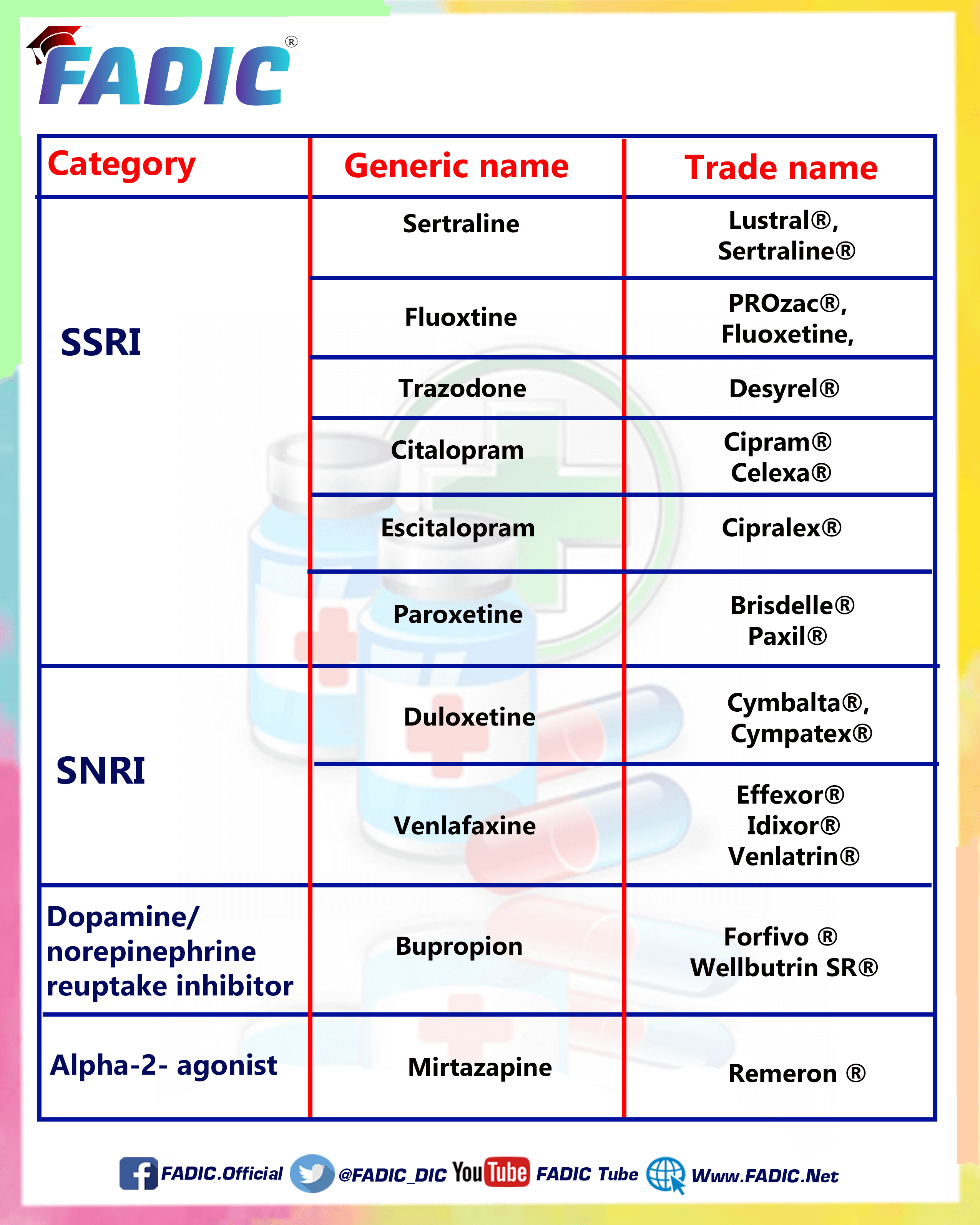
Commonly Used Benzodiazepines
Sedative- hypnotic- Anxiolytic
The sedative-hypnotics belong to a chemically heterogeneous class of drugs, almost all of which produce dose-dependent CNS depressant effects.
A significant subgroup is the benzodiazepines, but representatives of other subgroups, including barbiturates.
Newer drugs with distinctive characteristics include anxiolytic buspirone, several widely used hypnotics (zolpidem, zaleplon, eszopiclone), melatonin agonists and orexin antagonists, novel drugs used in sleep disorders.
Benzodiazepine
They enhance the effect of the neurotransmitter gamma-aminobutyric acid (GABA) at the GABAA receptor.
This result in sedative, hypnotic (sleep-inducing), anxiolytic (anti-anxiety), anticonvulsant, and muscle relaxant properties.

Commonly Used Dopamine Agonist
Anti-parkinsonian drugs
The drug treatment of Parkinson’s disease has progressed through 3 main stages:
Firstly, the use of anticholinergic drugs and amantadine.
Secondly, the introduction of levodopa and its association with peripheral decarboxylase inhibitors.
Finally, the use of direct-acting dopamine agonist drugs.
Dopamine agonist
- Activate receptors in the brain that produce dopamine, a chemical that helps regulate movement and mood
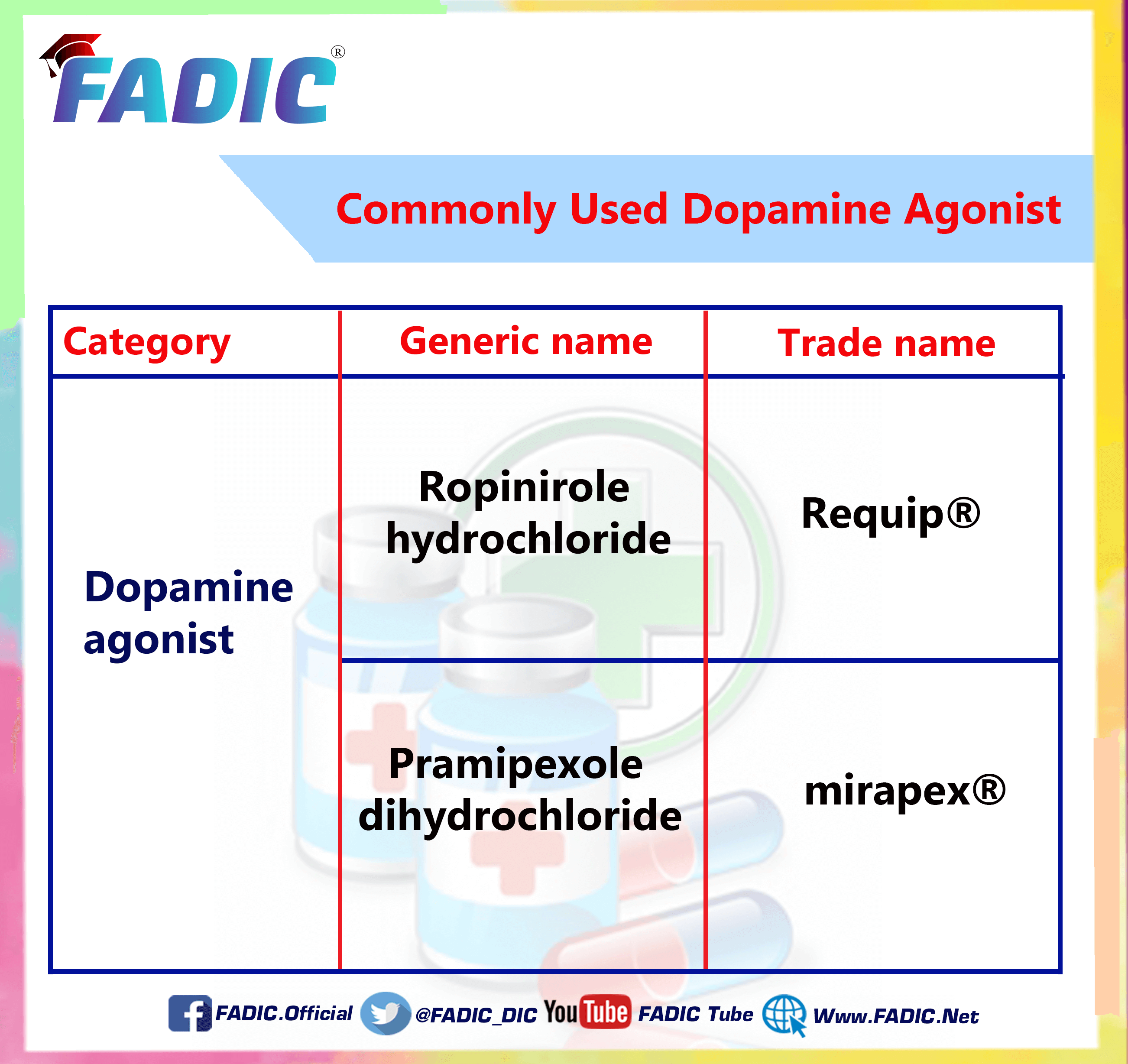
Drugs for Dementia and Alzheimer’s Disease
Dementia, including Alzheimer’s disease, has been found to involve several systems in the brain.
There is evidence for decreased cholinergic neuron activity markers and changes in brain glutamate, dopamine, norepinephrine, serotonin, and somatostatin.
Eventually, cholinergic neurons die or are destroyed. Treatment has focused on increasing the acetylcholine in the synapse by inhibiting the breakdown of acetylcholine.
Acetylcholinesterase inhibitor
- Inhibit the acetylcholinesterase enzyme from breaking down acetylcholine.
- Thereby increasing both the level and duration of action of the neurotransmitter acetylcholine
N-Methyl-D-aspartate receptor NMDA receptor antagonist
- A dysfunction of glutamatergic neurotransmission, manifested as neuronal excitotoxicity, is hypothesised to be involved in the aetiology of Alzheimer’s disease. Targeting the glutamatergic system, specifically NMDA receptors, offers a novel approach to the treatment, given the limited efficacy of existing drugs targeting the cholinergic system.
- Memantine is a low-affinity voltage-dependent uncompetitive antagonist at glutamatergic NMDA receptors.
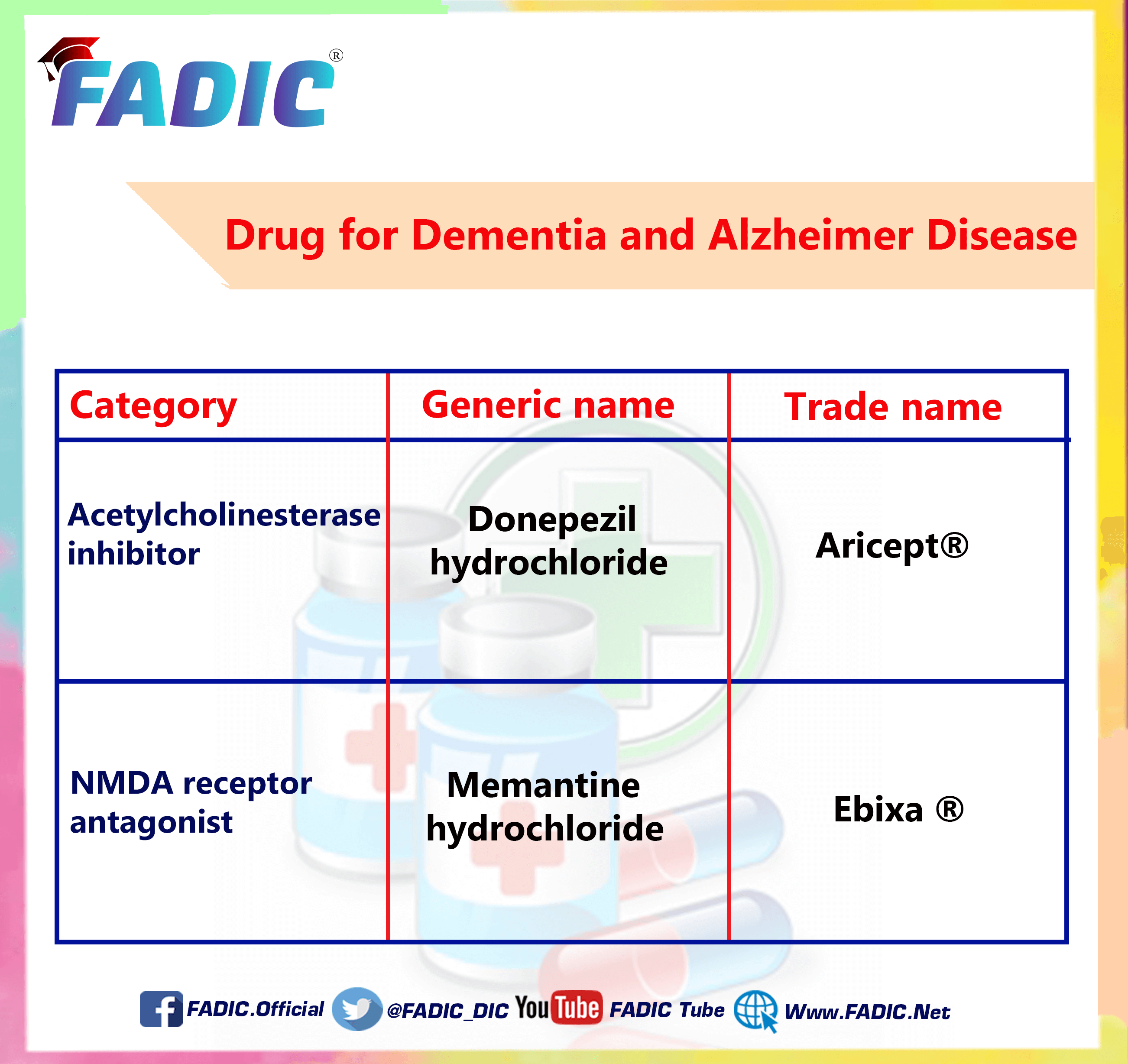
Commonly Used Anti-Diabetic Drugs
Drugs used in diabetes treat diabetes mellitus by lowering the glucose level in the blood.
Insulin is a protein hormone that is used as a medication to treat high blood glucose. This includes diabetes mellitus type 1, diabetes mellitus type 2, gestational diabetes, and complications of diabetes.
SGLT2 inhibitor
Sodium-glucose co-transporter-2 inhibitors work by inhibiting SGLT2. This is to prevent glucose reabsorption and facilitate its excretion in urine.
Sulfonylurea
These drugs exert their hypoglycaemic effects by stimulating insulin secretion from the pancreatic beta-cell
Biguanide
Metformin decreases hepatic glucose production and reduces intestinal absorption of glucose.
It also improves insulin sensitivity by increasing peripheral glucose uptake and utilisation.
DPP-4 inhibitor
It increases incretin levels (GLP-1 and GIP).
It inhibits glucagon release, increasing insulin secretion, decreasing gastric emptying, and reducing blood glucose levels.
Thiazolidinedione
Work on lowering insulin resistance, which I the underlying problem for many people with type 2 diabetes.
Glucagon-like peptide one receptor agonist
Affect glucose control through several mechanisms.
Such as enhancing glucose-dependent insulin secretion, slowing gastric emptying, and reducing postprandial glucagon and food intake.

Commonly hyperlipidemia Agents
Antihyperlipidemic agents promote the reduction of lipid levels in the blood.
Some antihyperlipidemic agents aim to lower low-density lipoprotein (LDL) cholesterol levels.
Some reduce triglyceride levels, and some help raise the high-density lipoprotein (HDL) cholesterol.
Reducing LDL cholesterol can prevent both primary and secondary symptoms of coronary heart disease.
HMG-CoA-reductase inhibitor
Act by competitively inhibiting HMG-CoA reductase
It’s the first and critical rate-limiting enzyme of the cholesterol biosynthetic pathway.
Cholesterol absorption inhibitors
Cholesterol absorption inhibitors reduce dietary and biliary cholesterol absorption through the intestines.
Therefore it decreases the amount of intestinal cholesterol delivered to the liver.
Reduced cholesterol levels delivered to the liver increase hepatic LDL (low-density lipoprotein) receptor activity.
This leads to increased clearance of LDL cholesterol.
Cholesterol absorption inhibitors treat hyperlipidemia by lowering LDL cholesterol and total cholesterol.
Fabric acid derivatives
Fabric acid derivatives or fibrates are regarded as broad-spectrum lipid-lowering drugs.
Their primary action is to decrease triglyceride levels, reduce low-density lipoprotein (LDL) cholesterol levels, and help raise high-density lipoprotein (HDL) cholesterol.
Fibrates appear to activate a protein called peroxisome proliferator-activated receptor alpha (PPAR-alpha).

Top Musculoskeletal Drugs
Muscle relaxants:
Neuromuscular blocking agents work at the neuromuscular junction. There are two types, depolarising and non-depolarizing.

Top Gastrointestinal Drugs
Gastrointestinal drugs include many different classes of medications used to treat gastrointestinal disorders.
- 5-aminosalicylates
- antacids
- antidiarrheals
- digestive enzymes
- functional bowel disorder agents
- anticholinergics/antispasmodics
- chloride channel activators
- guanylate cyclase-C agonists
- peripheral opioid receptor antagonists
- peripheral opioid receptor mixed agonists/antagonists
- serotoninergic neuroenteric modulators
- gallstone solubilising agents
- inflammatory bowel disorder
- GI stimulants
- H. pylori eradication agents
- H2 antagonists
- laxatives
- miscellaneous GI agents
- proton pump inhibitors
- antiemetic
Types:
Drugs for peptic ulcer
PPI
They block the gastric H and K-ATPase, inhibiting gastric acid secretion. This effect enables the healing of peptic ulcers, gastroesophageal reflux disease (GERD), Barrett’s oesophagus, and Zollinger-Ellison syndrome.
Histamine H2 antagonists
H2 antagonists block histamine-induced gastric acid secretion from the parietal cells of the gastric mucosa (lining of the stomach).
This suppresses basal and meal-stimulated acid secretion in a dose-dependent manner.
H2 antagonists treat gastroesophageal reflux disease (GERD), gastrointestinal ulcers, and other hypersecretory conditions.
Antiemetic
The main classes of antiemetics are:
- Dopamine antagonists (e.g., metoclopramide, haloperidol, domperidone, levomepromazine, other antipsychotics)
- Antihistamines (e.g.eg, cyclizine, promethazine)
- Serotonin (5HT3) antagonists (e.g., ondansetron, tropisetron, granisetron)
- others
Laxative
Laxatives can be classified into four main categories:
- bulk laxatives
- stimulant laxatives
- osmotic laxatives
- stool softeners.
- Saline osmotic laxative
Antispasmodic
A group of medicines can help control some symptoms that arise from the gut (intestines), particularly gut spasms.
There are two main types, as follows.
- Antimuscarinics
- Smooth muscle relaxant
Inflammatory bowel disorder
Inflammatory bowel disease (IBD) is an umbrella term that describes disorders involving chronic digestive tract inflammation. The goal of inflammatory bowel disease treatment is to reduce inflammation. The treatment includes using :
- Anti-inflammatory drugs
- Immune system suppressors
- Antibiotics
- Other medications and supplements
Immune system suppressors
These drugs work in various ways to suppress the immune response that releases inflammation-inducing chemicals in the intestinal lining.
Some examples of immunosuppressant drugs include tumour necrosis factor (TNF)-alpha inhibitors or biologics, which work by neutralising a protein produced by the immune system.

Top Respiratory Drugs
The term ” respiratory agent ” describes various medicines used to relieve, treat, or prevent respiratory diseases such as asthma, chronic bronchitis, chronic obstructive pulmonary disease (COPD), or pneumonia. Drugs for respiratory drugs
- antiasthmatic combinations
- antihistamines
- antitussives
- bronchodilators
- adrenergic bronchodilators
- anticholinergic bronchodilators
- bronchodilator combinations
- methylxanthines
- decongestants
- expectorants
- leukotriene modifiers
- lung surfactants
- miscellaneous respiratory agents
- respiratory inhalant products
- inhaled anti-infectives
- inhaled corticosteroids
- mast cell stabilisers
- mucolytics
- selective phosphodiesterase-4 inhibitors
- upper respiratory combinations
Type:
Beta-2 agonist
Activation of β adrenergic receptors leads to relaxation of smooth muscle in the lung and dilation and opening of the airways.
Anticholinergic
These work by binding to muscarinic receptors and blocking the action of acetylcholine. They reduce bronchomotor tone, which effectively leads to bronchodilation.
Leukotriene receptor antagonist:
They are a class of oral medication that is non-steroidal, called LTRAs for short. They may also be referred to as anti-inflammatory bronchoconstriction prevention.
LTRAs work by blocking a chemical reaction that can lead to inflammation in the airways
Histamine H1 Antagonist
The primary mechanism of antihistamine action in treating allergic diseases is the competitive antagonism of histamine binding to cellular receptors.
They are present on nerve endings, smooth muscles, and epithelial cells.
Corticosteroid
Corticosteroids are classified as either:
- Glucocorticoids (anti-inflammatory) suppress inflammation and immunity and assist in breaking fats, carbohydrates, and proteins.
- Mineralocorticoids (salt retaining) regulate the body’s balance of salt and water.
Antitussive
Antitussives help your cough by deterring your cough reflex. Antitussive is sometimes used with an expectorant that helps to thin mucus.
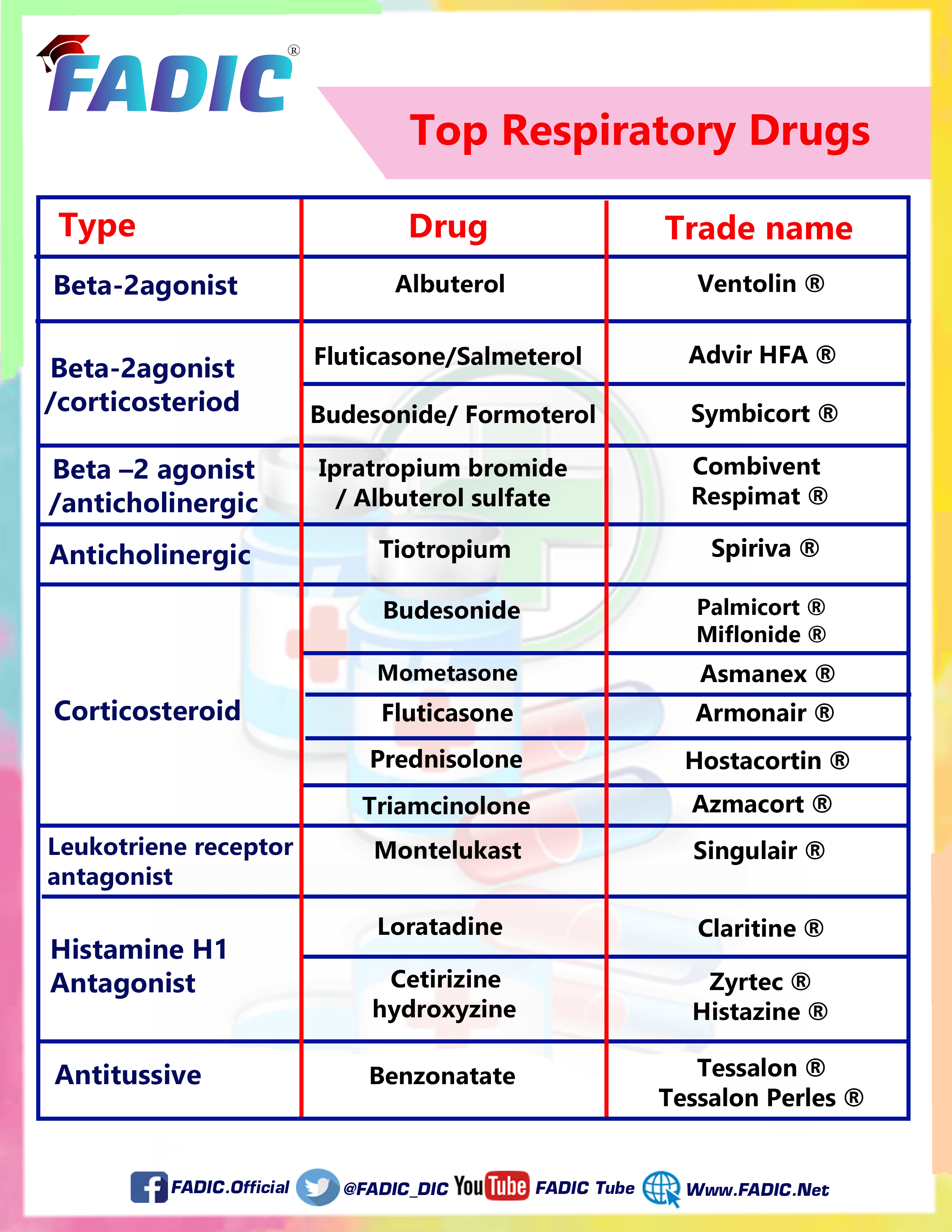
Commonly Anti-glaucoma Drugs
Ophthalmic preparations are agents specially designed to be applied to the eye. They used to treat or diagnose the different eye diseases
.Antiglaucoma drugs
Antiglaucoma eye drops help keep the pressure at the right level for you, reducing the risk of vision loss.
They include:
- Alpha agonists
Reduce the production of fluid in the eye and improve the flow of fluid out of the eye - Beta-blockers
Reduce the production of fluid in the eye. - Prostaglandin analogues
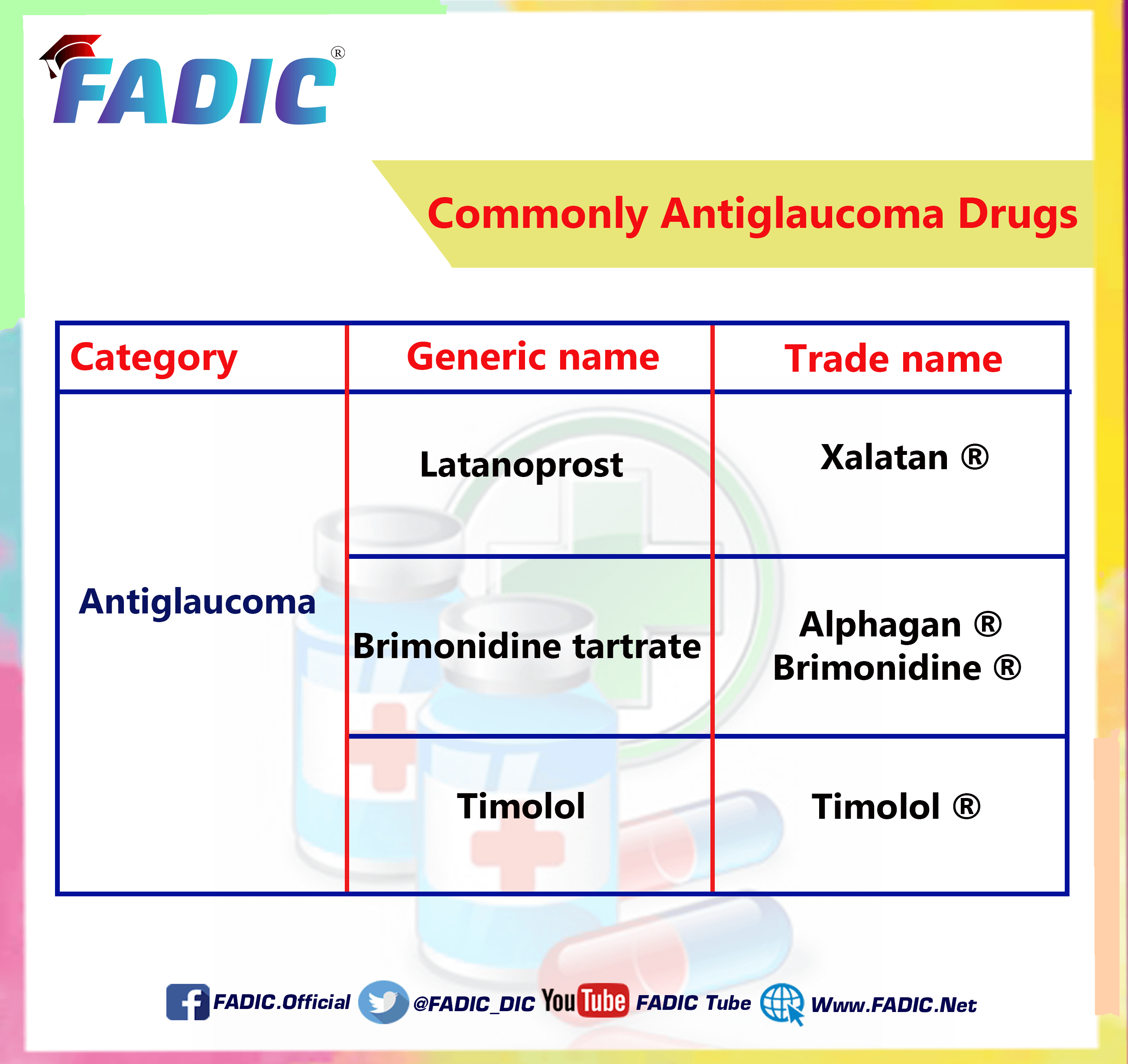
Commonly Used Antimicrobial Drugs
Drugs are used to treat a microbial infection. Antimicrobial medicines can be grouped according to the microorganisms they act primarily against. they include
- Antibiotic
- Antiviral
- Antifungal
- Antiparasitic
Types:
Antibiotics, also known as antibacterials, are medications that destroy or slow down the growth of bacteria
Antibiotics are commonly classified based on the mechanism of action, chemical structure, or spectrum of activity. Antibiotic classification .according to the chemical structure
I- naturally producing antimicrobial:
- β Lactam antibiotics
- Tetracycline group
- Rifamycins
- Aminoglycoside-aminocyclitol antibiotics
- Macrolides
- Lincosamides
- Streptogramins
- Polypeptide antibiotics
- Glycopeptide antibiotics
- Miscellaneous antibacterial antibiotics
- Chloramphenicol
- Fusidic acid
- Mupirocin (pseudomonic acid A)
II-Synthetic antimicrobial agents
- Sulphonamides
- Diaminopyrimidine derivatives
- Co-trimoxazole
- Dapsone
- Antitubercular drugs
- Nitrofuran compounds
- Quinolone antibacterials
- Imidazole derivatives
- Flucytosine
- Synthetic allylamines
- Synthetic thiocarbamates
- Oxazolidinones
Antiviral
They are medications that destroy or slow down the growth of the virus. An antiviral agent must act at one of five basic steps in the viral replication cycle to inhibit the virus:
- attachment and penetration of the virus into the host cell,
- uncoating of virus (e.g., removal of the protein surface and release of the viral DNA or RNA),
- synthesis of new viral components by the host cell as directed by the virus DNA,
- assembly of the components into the new virus,
- release of the virus from the host cell.
Antiprotozoal drug
They are an agent that kills or inhibits the growth of organisms known as protozoans. Protozoans cause a variety of diseases, including malaria and Chagas’ disease. While protozoans are microscopic, they are similar to plants and animals in that they are eukaryotes and thus have a clearly defined cell nucleus. This distinguishes them from prokaryotes, such as bacteria. As a result, many of the antibiotics that are effective in inhibiting bacteria are not active against protozoans.
Antifungal
Antifungal medicines treat fungal infections, most commonly affecting skin, hair and nails.
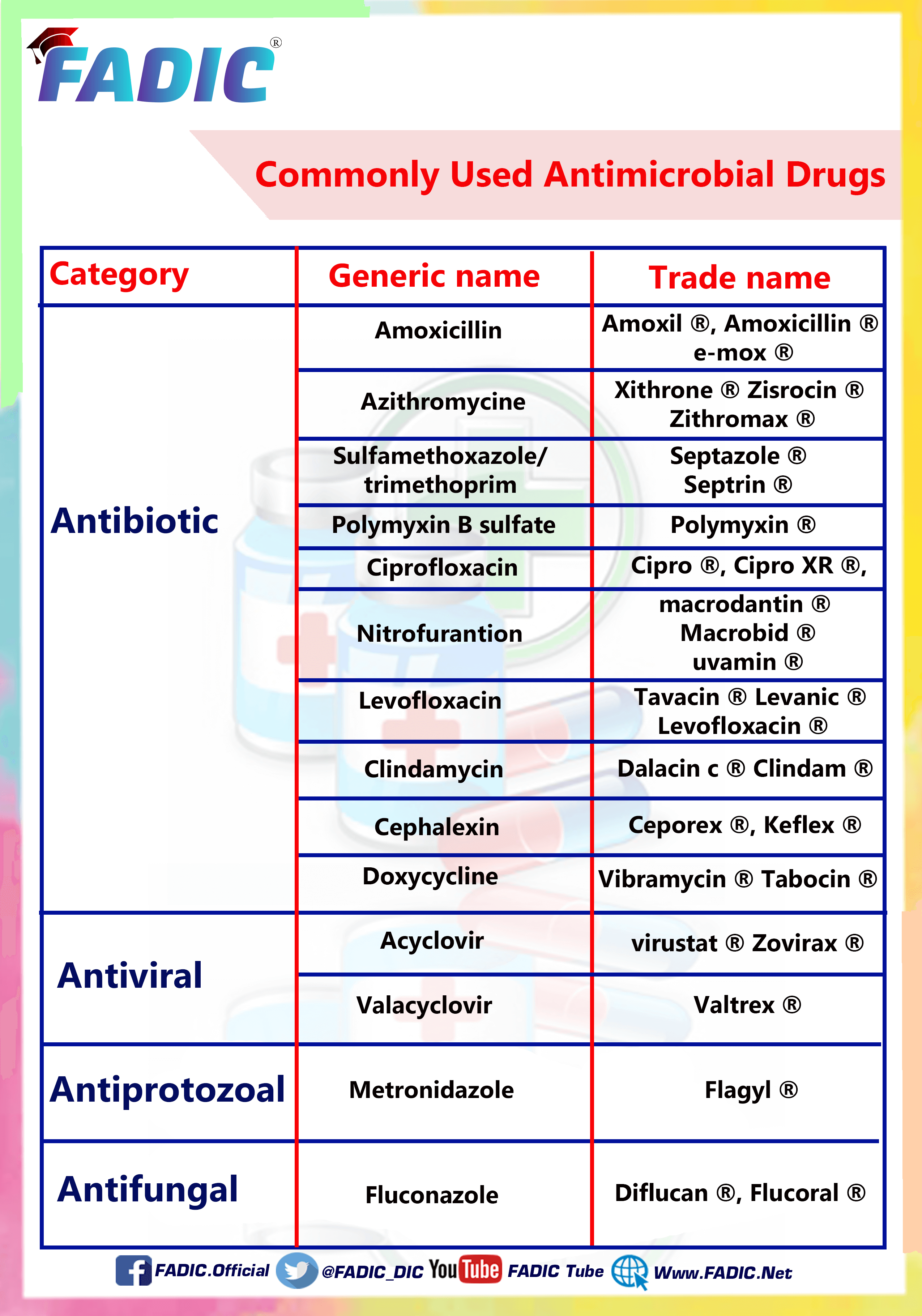
Commonly Used Hormone Treatment
It is the use of hormones in medical treatment among the Top 200 Drugs.
Treatment with hormone antagonists may also be referred to as hormonal therapy or antihormone therapy.
The most general classes of hormone therapy are oncologic hormone therapy. In addition, hormone replacement therapy (for menopause), androgen replacement therapy(ART), contraceptives and transgender hormone therapy.
Contraceptive
Contain two types of synthetic female hormones, estrogen and progestin. These are similar to the estrogen and progesterone usually made by the ovaries.
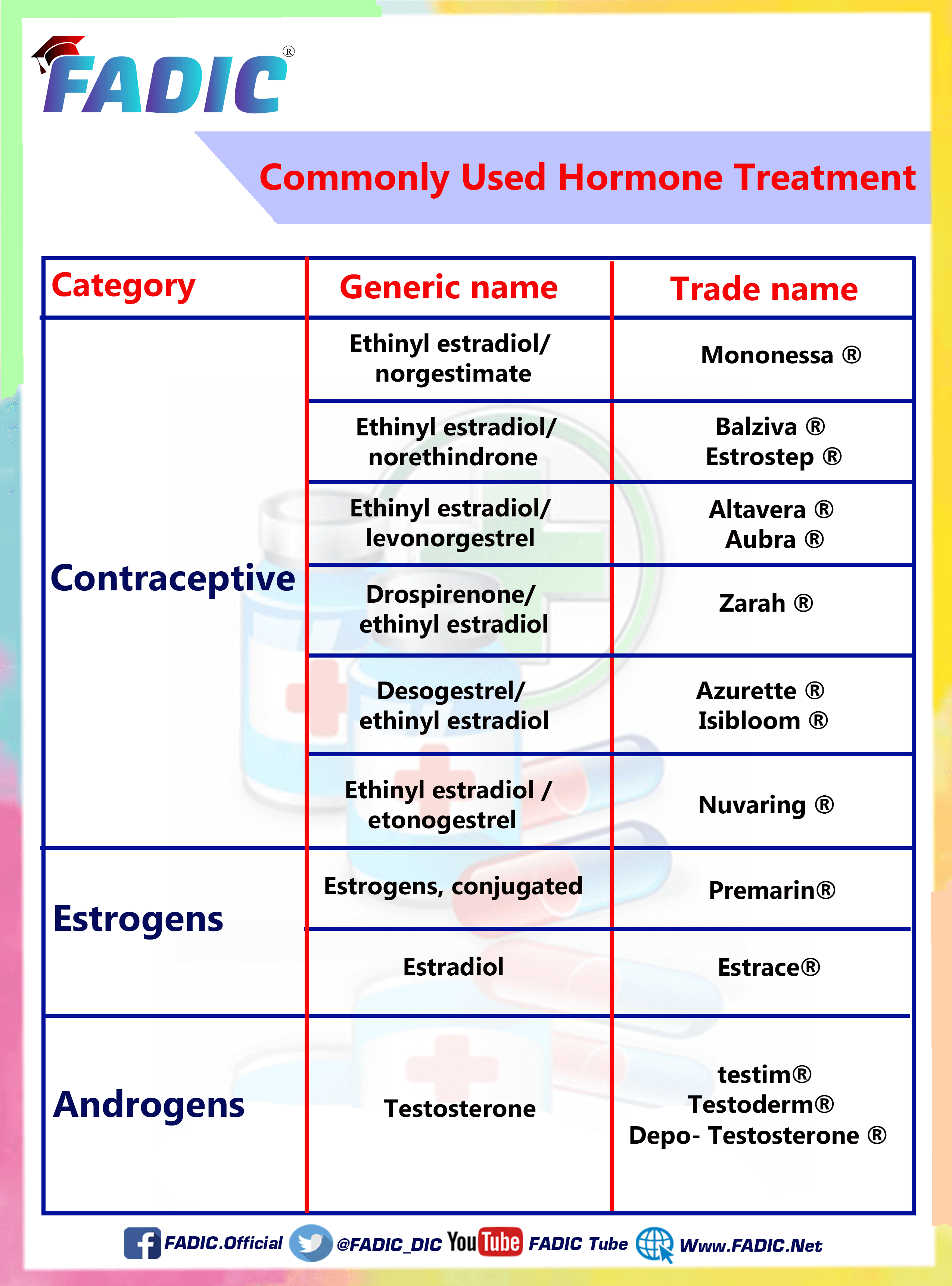
Common Anticoagulant Drugs
They are chemical substances that prevent or reduce blood coagulation, prolonging the clotting time.
They are used in therapy for thrombotic disorders.
Types
Factor Xa inhibitor
They work by selectively and reversibly blocking the activity of clotting factor Xa, preventing clot formation.
They affect both factor Xa within the blood and a preexisting clot
Antiplatelet
They decrease platelet aggregation and inhibit thrombus formation.
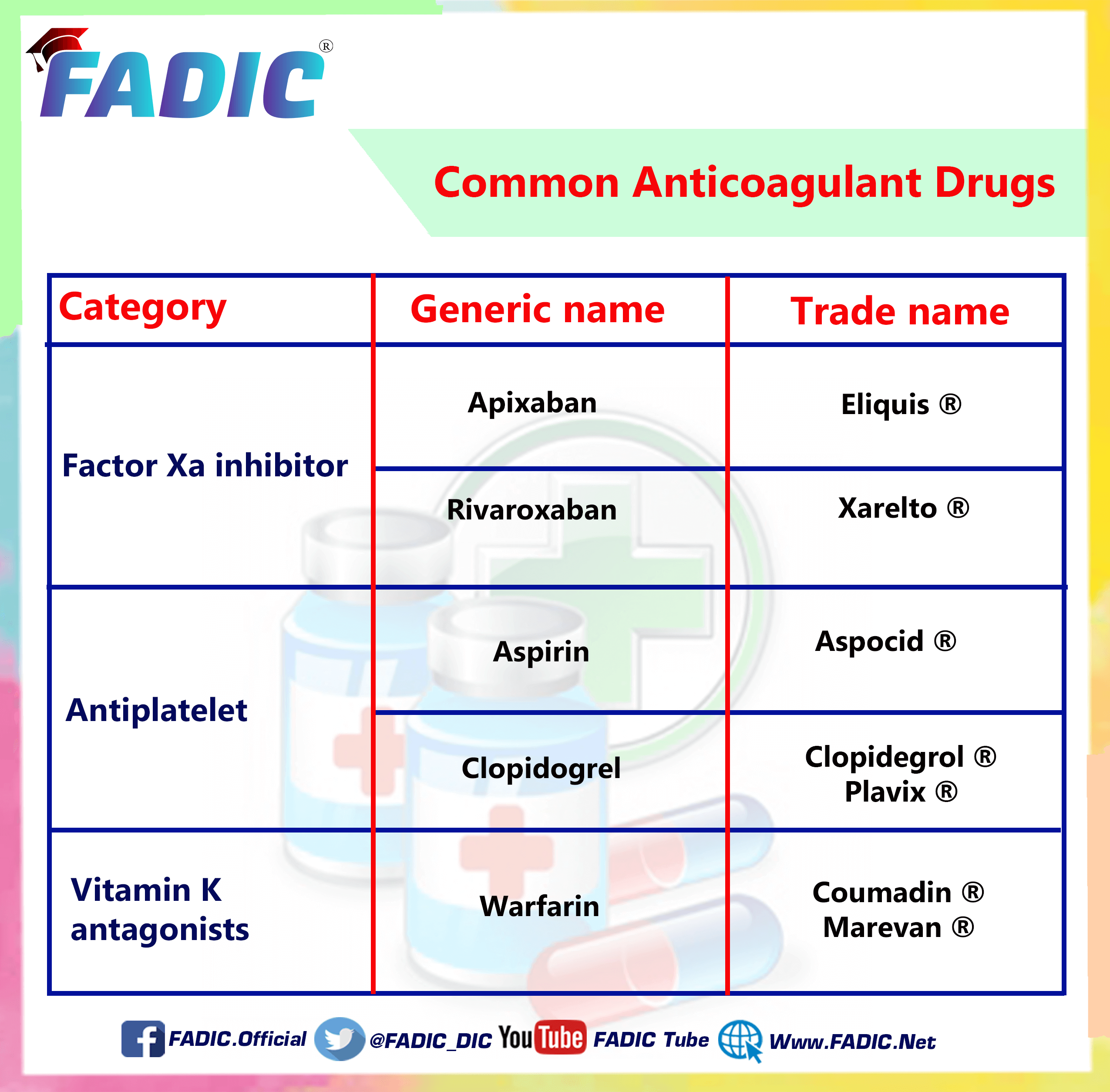
Miscellaneous Common Drugs
Drugs for Hypothyroidism
Hypothyroidism, also called underactive thyroid or low thyroid, is a disorder of the endocrine system in which the thyroid gland does not produce enough thyroid hormone.
Levothyroxine > Eltroxin ®, Euthyrox ®
Vitamins
Vitamins and minerals are nutrients the body needs in small amounts to work correctly and stay healthy. There are 13 vitamins C, A, D, E, K, and B (thiamine, riboflavin, niacin, pantothenic acid, biotin, B6, B12, and folate).
Vitamine D analog: Ergocalciferol (Sterogyl ® Drisdol ®)
Drug for attention deficit hyperactivity disorder
Norepinephrine reuptake inhibitor (NRI)
Norepinephrine reuptake inhibitor (NRI, NERI) or adrenergic reuptake inhibitor (ARI). Act as a reuptake inhibitor for norepinephrine and epinephrine by blocking the action of the norepinephrine transporter (NET). Atomoxetine is a selective norepinephrine reuptake inhibitor used primarily for attention deficit hyperactivity disorder therapy.
NRI (Atomoxetine hydrochloride): Strattera ®
Anti-epileptics
Histone deacetylase inhibitor
Histone deacetylase inhibitors (HDAC inhibitors) are chemical compounds that inhibit histone deacetylases.
HDIs have a long history of use in psychiatry and neurology as mood stabilisers and anti-epileptics. More recently, they are being investigated as possible treatments for cancers and parasitic and inflammatory diseases.
Histone deacetylase inhibitor: Divalproex sodium (Divakote®, Depakote ER®)
Anorexiant
Anorexiants are drugs that act on the brain to suppress appetite. They have a stimulant effect on the hypothalamic and limbic regions, which control satiety. Anorexiants are used as therapy for obesity.
Stimulate neurons to release or maintain high levels of catecholamines. High levels of these catecholamines tend to suppress hunger signals and appetite.
Anorexiant: Phentermine (Adipex-P ®, Lomaira ®)
Anti-manic Drugs
An anti-manic drug is any drug that stabilises mood by controlling symptoms of mania, the abnormal psychological state of excitement.
Mania is a severe form of emotional disturbance in which a person is progressively and inappropriately euphoric and simultaneously hyperactive in speech and locomotor behaviour. This is often accompanied by significant insomnia (inability to sleep), excessive talking, extreme confidence, and increased appetite. As the episode builds, the person experiences racing thoughts, severe agitation, and incoherence, frequently replaced with delusions, hallucinations, and paranoia, and ultimately may become hostile and violent and finally collapse in some persons, periods of depression and mania alternate, giving rise to bipolar disorder.
Anti-manic: Lithium (Lithobid ®, Eskalith ®)
Blackbox Warning
As per FDA regulations, any drug may lead to adverse reactions.
Moreover, ones that might cause severe injury or result in death should be labelled with a black box warning.
The number of drugs with a black box warning is 81 (40.5%) of the 200 most prescribed medicines.
Dosage Forms
The lists also highlight the dosage forms of the top 200 most prescribed drugs.
- Oral: 166
- Inhalation: 7
- Intravenous: 3
- Intramuscular: 2
- Injections: 7
- Liquids: 4
- Subcutaneous: 4
- Ophthalmic: 3
- Nasal: 1
- Topical: 1
- Transdermal: 1
- Vaginal: 1
Biologicals and Chemicals
As per the lists, only 7 (3.5%) of drugs were biologicals among the top 200 most prescribed medications.
The rest were chemical entities.
Opioids
Five opioids, acetaminophen/hydrocodone, tramadol, oxycodone, hydrocodone, and morphine,e are among the top 200 drugs.
Acetaminophen/hydrocodone is 1 of the top 10 most prescribed drugs.
Adverse Drug Reactions
Within the top 200 drugs, the most common ADRs and their range according to the systems are as follows:
Importance of list:
Pharmacy students and pharmacists should be familiar with prescribed drugs.
That is to deliver optimum pharmacy services to clients.
The question is how many products they need to know.
The list of 200 prescribed drugs has been used as part of in-house training.
Also, to ease the ordering of drug stocks at community pharmacies, e.g. Boots the Chemist and some hospitals.
In addition to pharmacy practice, the drug list is also beneficial to other hard sciences, i.e. pharmaceutics and pharmaceutical chemistry.
This list enables students and residents to be more confident and competent before facing actual patients.
It will be handy for pharmacists, researchers and other healthcare professionals interested in developing new strategies for treating patients.
The expiry date of Some drugs:

Conclusion:
Pharmacists are an integral part of our health care team.
They are also considered the most accessible health care professionals.
The drug list may serve as easy access to ideas for pharmacists.
In addition, researchers and other healthcare professionals are interested in developing new strategies for treating patients with various ailments.
Read More on FADIC Website:
- Register Now in Drug Information Program and Workshop from this LINK.
- Buy FADIC Drug Information Flash Cards from FADIC Store from this LINK.
- BuyThe Arabic guide to the most popular drugs from FADIC Store, from this LINK.
- Buy FADIC Clinical Pharmacology Cards Quick Guide from FADIC Store, from this LINK.
- Register in ABC of Antimicrobial & Learn about Pharmacology of Antibiotics from this LINK.

 Log in
Log in Sign up
Sign up



